Photo courtesy of Matt Kartozian-USA TODAY Sports
Early in the season Castro was hitting .355, and for that brief moment it looked like the ghosts of 2013 might’ve been completely behind him. Castro’s production has cratered since that high water mark; he entered play on May 20 with a .646 OPS and a mysterious lack of power.
It’s not so much that Castro’s power production should be expected, it’s more that given the player profile, a .345 SLG isn’t going to get it done. So what gives here? Why is Castro suddenly this meek at the plate?
Early signs
First, let’s take a step back and look at what Castro was doing even with a .355 average early in the season. Here’s his slash line and OPS through April 23:
.355/.375/.468, .843.
Even with the hot batting average, there just wasn’t much to Castro’s secondary offensive game. One of the bigger developments from 2014 was the maturation of Castro’s power. He’s never going to be a power hitter, but Castro was flirting with 18-20 homeruns before he went down with an ankle injury last year. He had 48 extra-base hits in 569 plate appearances which, given the position, is solid power production. This year, Castro has seven extra-base hits in 186 plate appearances, which just isn’t going to get it done.
There’s also a concerning trend on the types of pitches Castro is increasingly whiffing on as he ages:
He’s become susceptible to off-speed stuff and he’s starting to whiff on fastballs more as well. That’s a poor trend for a player whose bat is his carrying tool.
Grounded
We’ve established that the power production is down, but now let’s get into the meat of the issue and figure why this has happened.
Michael Cerami at Bleacher Nation was on this pretty early. There were some tweets about Castro’s tendency to roll ground balls over to the left side pretty early, but we’ll get to that in depth later. For now here’s a quote from Cerami’s piece about Castro’s batted-ball profile:
“The numbers back this up, as well: Castro’s 2015 Pull% (54.3) is far greater than his career Pull% (35.8). If Castro continues to try and pull outside pitches—instead of taking them other way, like he has historically done—pitchers will keep attacking him away and he will continue to generate weak groundouts to the left side of the infield.”
There’s a key phrase in there, “…try and pull outside pitches.” In years past, Castro had an ability to flip outside pitches for base hits. Let’s take a look at Castro’s zone profile from 2010-2012:
Castro did well all over the zone, but pay particular attention to the outer half of the plate. Castro hit .315 on balls down and away on him over this stretch. He was displaying his preternatural ability to hit. Let’s update this and look at 2013 to the present:
Castro still does well middle-away but he’s now hitting .231 on balls down and away and .250 up and away. His ability to hit in the zone has also depreciated. That’s not a winning combination.
Let’s go back to that Cerami piece for a second. Castro really has hit more groundballs this year and he’s hitting them with much more frequency on pitches away. Here’s how Castro did in 2014:
And here’s 2015:
To this point, Castro hasn’t actually avoided swinging at offerings he doesn’t do particularly well with either. Here is his 2014 swing profile:
And here it is in 2015:
Summary
Even though Castro is getting poorer results, he’s swinging more and perhaps is trying to aggressively hit out of a slump. Have you noticed a particular lack of pull power or base hits that are hard hit to the right side from Castro? His spray chart sure has:
There have always been red flags in Castro’s profile; his defense was never going to be enough to carry a below-average bat, his approach was hyper aggressive and batting-average dependent, and if the hit tool started to regress, the power wasn’t going to be enough to carry the overall package. Castro’s carrying tool to the majors was the hit tool, and up until 2013 it showed the promise to be one of the best in all of baseball. After that disastrous season Castro has tried to find the magic again, but he hasn’t quite shown to be the same hitter he was before the Cubs tried to “fix” him. He’s added power and his defense has improved since his debut, but the bat has taken a step backwards in terms of pure bat-to-ball ability.
Sometimes organizations try to mold a player into the image that they perceive to be the best fit for their style instead of allowing the player to grow up and be whatever his talents and skills dictate he should be. The Cubs did try to give Castro more patience, and in the process they may have set him back in a way that will be difficult to come back from. There is no easy fix for what’s on display here. The issues Castro has displayed so far this year have been trending this way since 2013. Castro still has the talent to be a valuable player at the major-league level, but the adjustments have to come now.
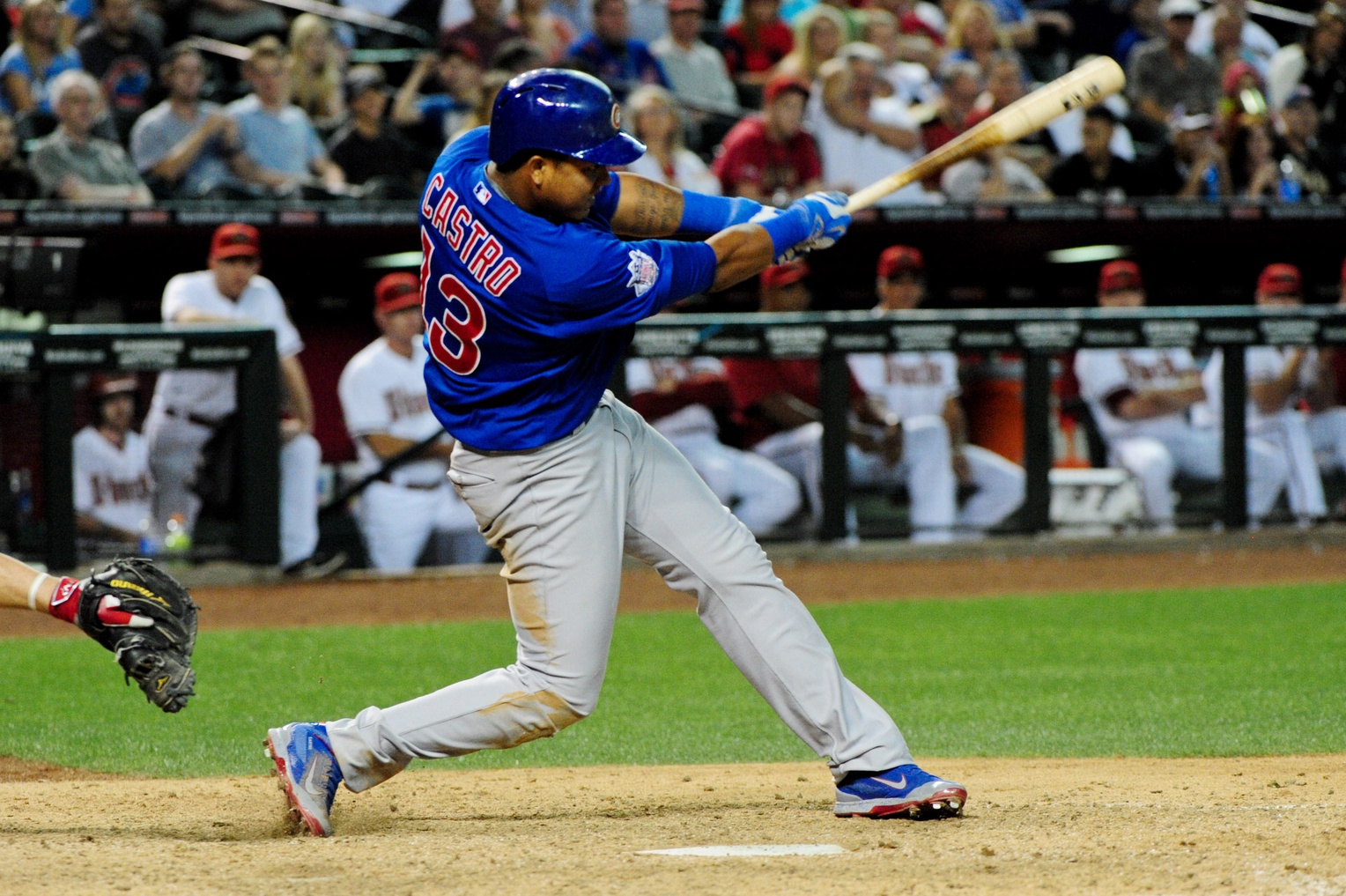
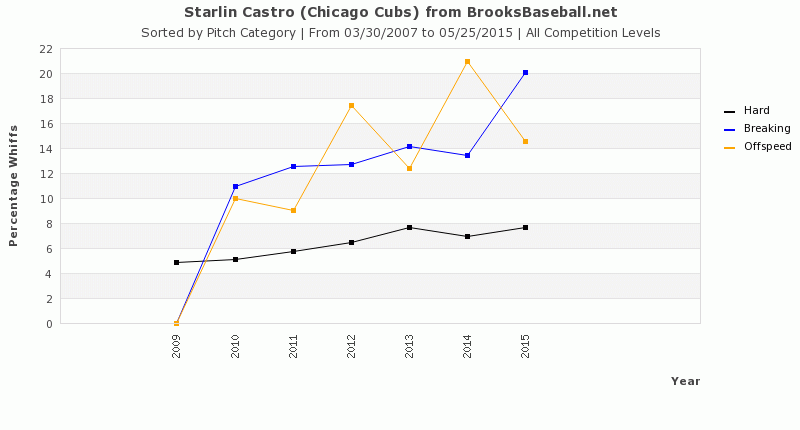
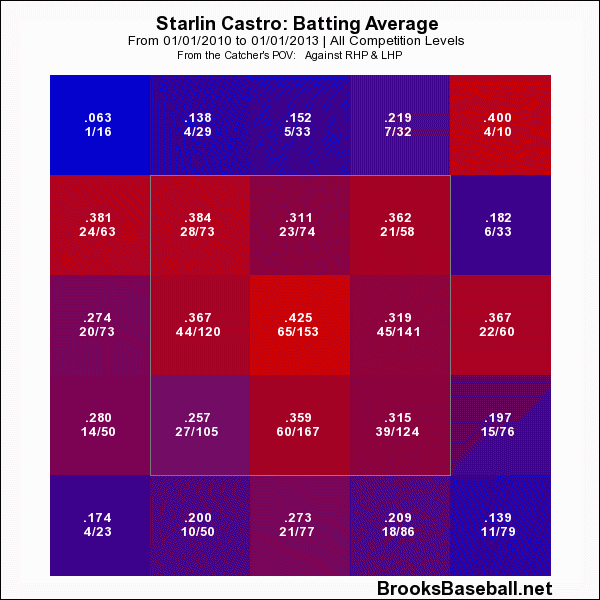
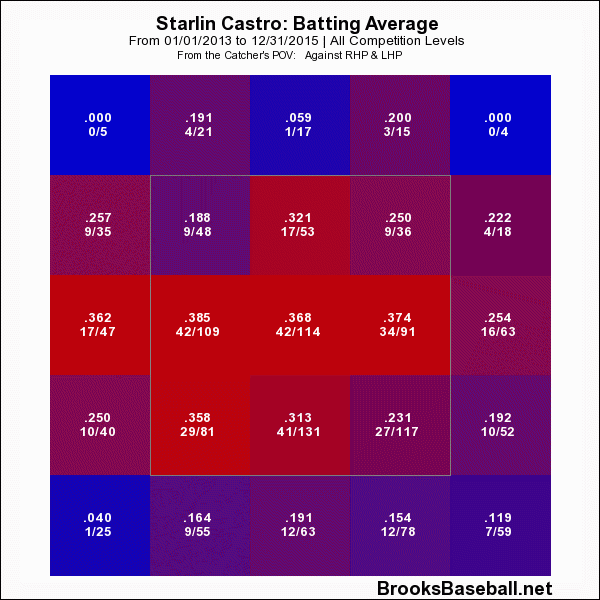
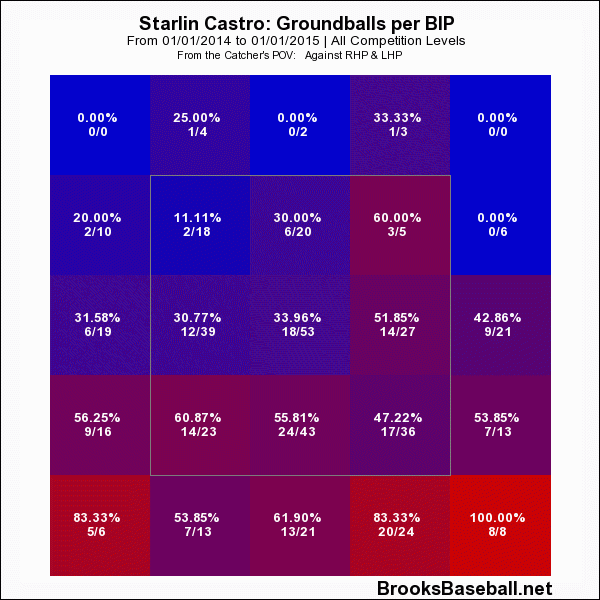
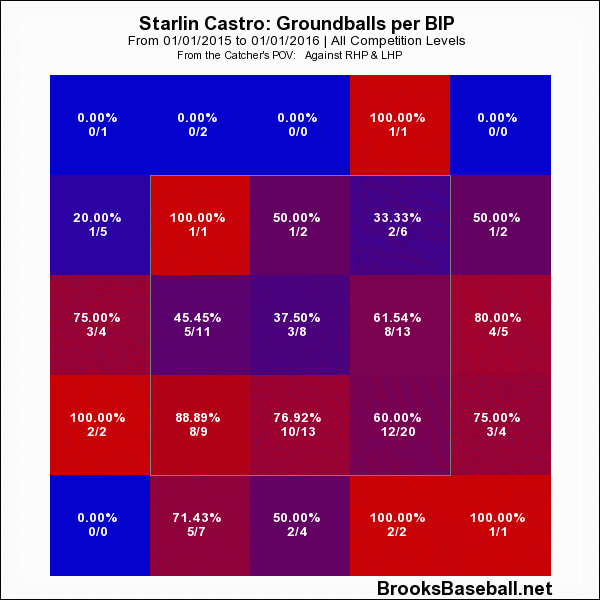
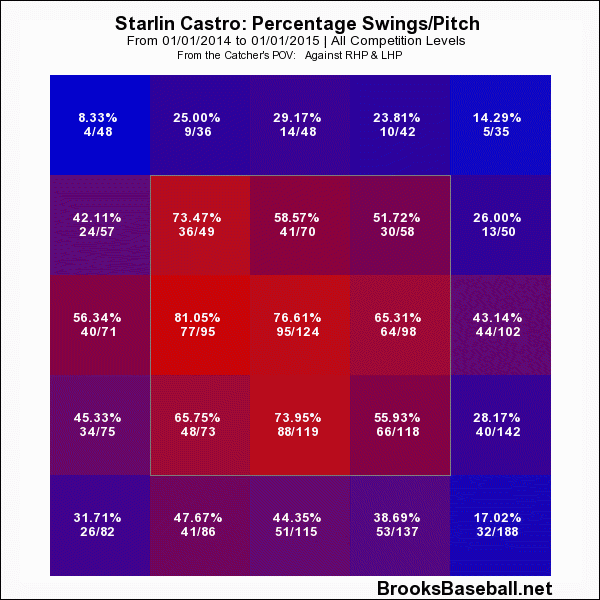
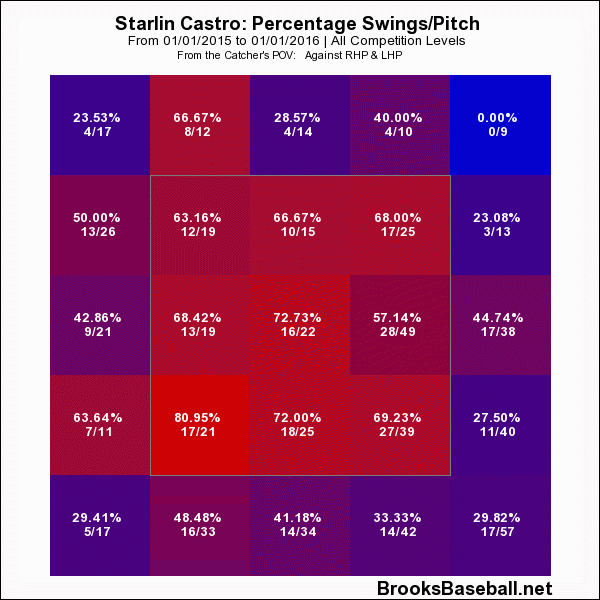
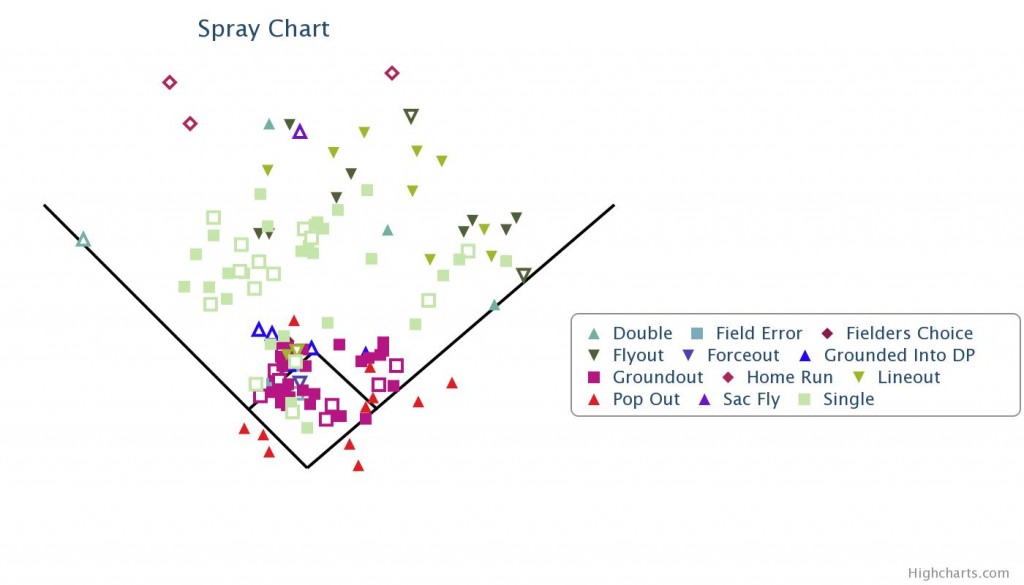
This is great. Castro’s performance is, IMO, one of they key factors to the Cubs’ success the rest of the season. Russell will improve at the plate (hopefully he’ll figure out breaking balls) and will be valuable because of his D, but if Castro can become a decent hitter again then the middle infield situation will be a lot more palatable. If not, then Baez might end up with the big league club sooner, to Matt’s delight.